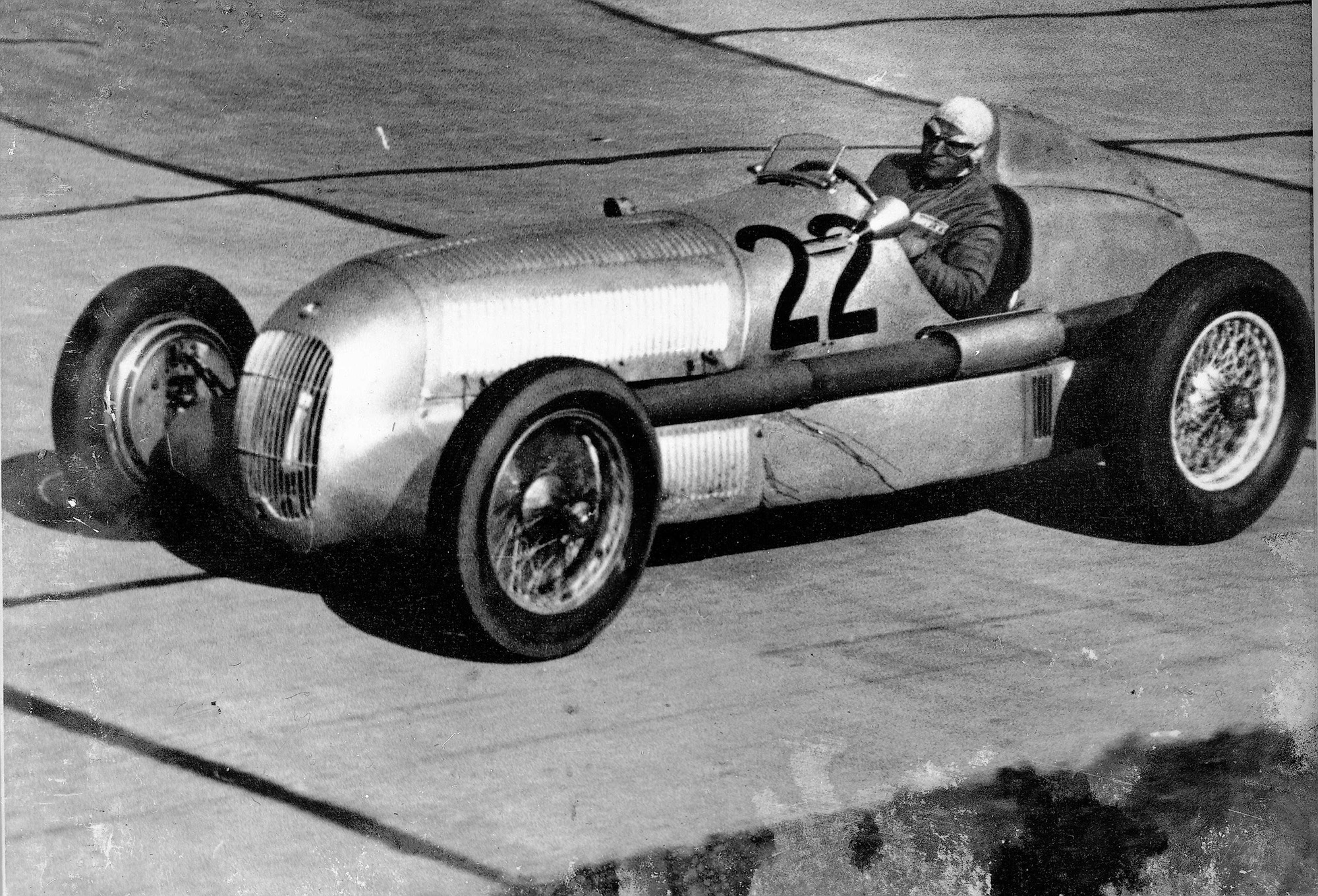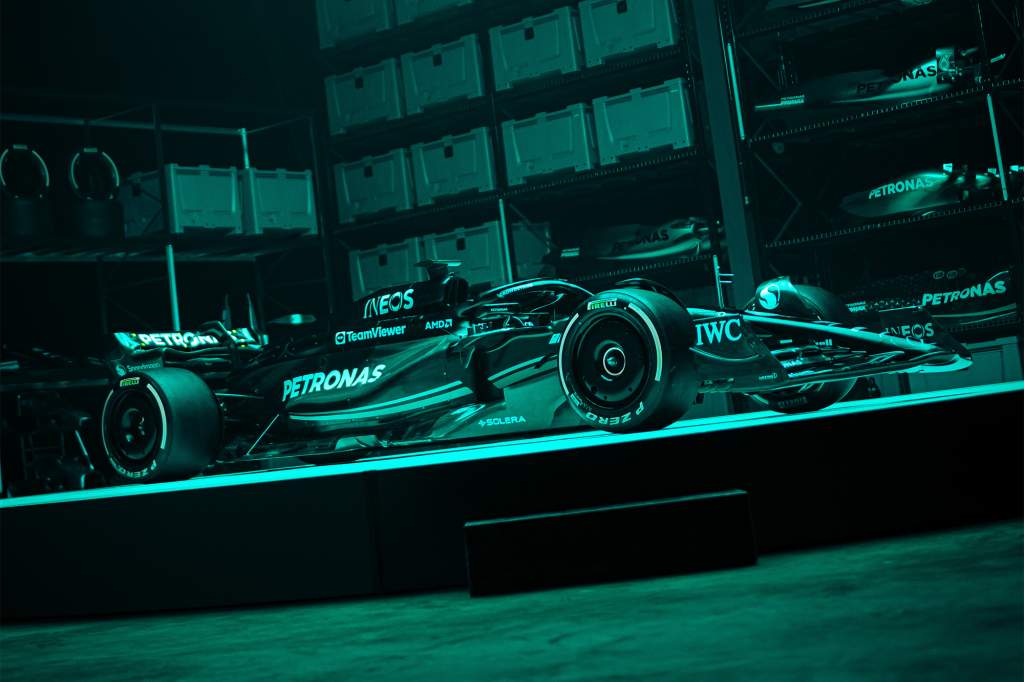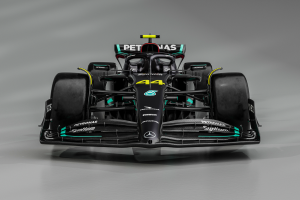Up Next

Mercedes says it is on the minimum weight limit with its W14 Formula 1 car and has been able to achieve this in part thanks to its return to a black colour scheme for 2023.
Hitting the 798kg limit was one of the key things Mercedes had difficulty addressing in-season in 2022 – with other problems such as the porpoising and bouncing the W13 was badly affected by requiring its floor to be stiffened at the expense of adding weight.
Team principal Toto Wolff did not hide in Mercedes’ press release revealing the W14 that its return to a black livery, which Mercedes used in 2020 and 2021 as an anti-racism message, was part of “a significant project to reduce overall weight”.
Speaking to media following the launch of the car, Wolff went further by claiming Mercedes was on the 2023 limit and that this was emphatically helped by its livery choice.
“We are on the weight limit,” Wolff said.
“When we looked at all the weight savings, everybody needed to make a commitment.
“So it is really a performance issue, but then there’s not tonnes of weight that you can save on the paint, but it shows the intent of what we do and the narrative is to strive, not only because of the historical context of how the Silver Arrows were created, but also because our attempt in painting the car black two years ago is still very valid.
“So it all kind of made sense.”
Mercedes’ original paint-less Silver Arrows
Edd Straw

Mercedes leaving parts of the car unpainted to save weight follows a modern trend, but it’s also – as Wolff alluded – a story that goes back a long way. Albeit, one that is often mistold.
In 1934, Mercedes created the ‘Silver Arrow’ thanks to running the new Mercedes W25 in silver, without paint, to ensure the car was legal for the 750kg formula. In this case, that was a maximum weight limit rather than today’s minimum.
It’s said that this happened because the white paint was scraped off the cars ahead of the Nurburgring, where the Mercedes W25 made its race debut in the Eifelrennen. But this is a myth given the cars appeared (but did not race) at Avus previously also in bare silver. What’s more, the Eifelrennen was to Libre regulations, meaning a late weight-saving measure to dip under the weight maximum wouldn’t have been necessary anyway.
However, the cars were conceived to maximise what was possible under the weight limit, so the decision not to run paint was part of the design process, not something implemented on an ad hoc basis.
(Image courtesy of Mercedes Classic)
The latest published version of F1’s 2023 regulations still say that the minimum weight will be 796kg, a reduction of 2kg from 2022.
However, it is now widely understood that the figure will remain at 798kg in 2023.
Other F1 teams have also incorporated more black into their schemes for 2023 in a likely bid to reduce the weight of their cars, while since the new limit was introduced for the start of 2022 Williams ran arguably the most extreme stripped back version of all in the early part of last year – something it claimed had gained it “quite a lot” in performance terms.

Speaking about Mercedes’ return to a black livery, seven-time F1 champion Lewis Hamilton said “pretty much everyone in the garage” preferred that design used in 2020 and 2021 but also acknowledged “ultimately weight is a key goal for us”.
“We were overweight all year last year,” he said. “And so we were carrying a weight penalty even into the last race.
“So that’s been a heavy focus to try and make sure that’s not the case this year.”
But he said Mercedes would only “find out later on [in shakedown] or next week” if it had been successful in hitting the limit.
“Even last year, they thought they were going to be on weight, and we were way over,” he said.
“I’m glad that’s been taken seriously and that’s what we see on the paint [the livery] – we see a lot of carbon, not too much paint on the car, it’s the bare minimum.
“For me it’s positive, because that means that we’re all out on performance and it’s not necessarily how it looks, it’s about how quick it goes.”





